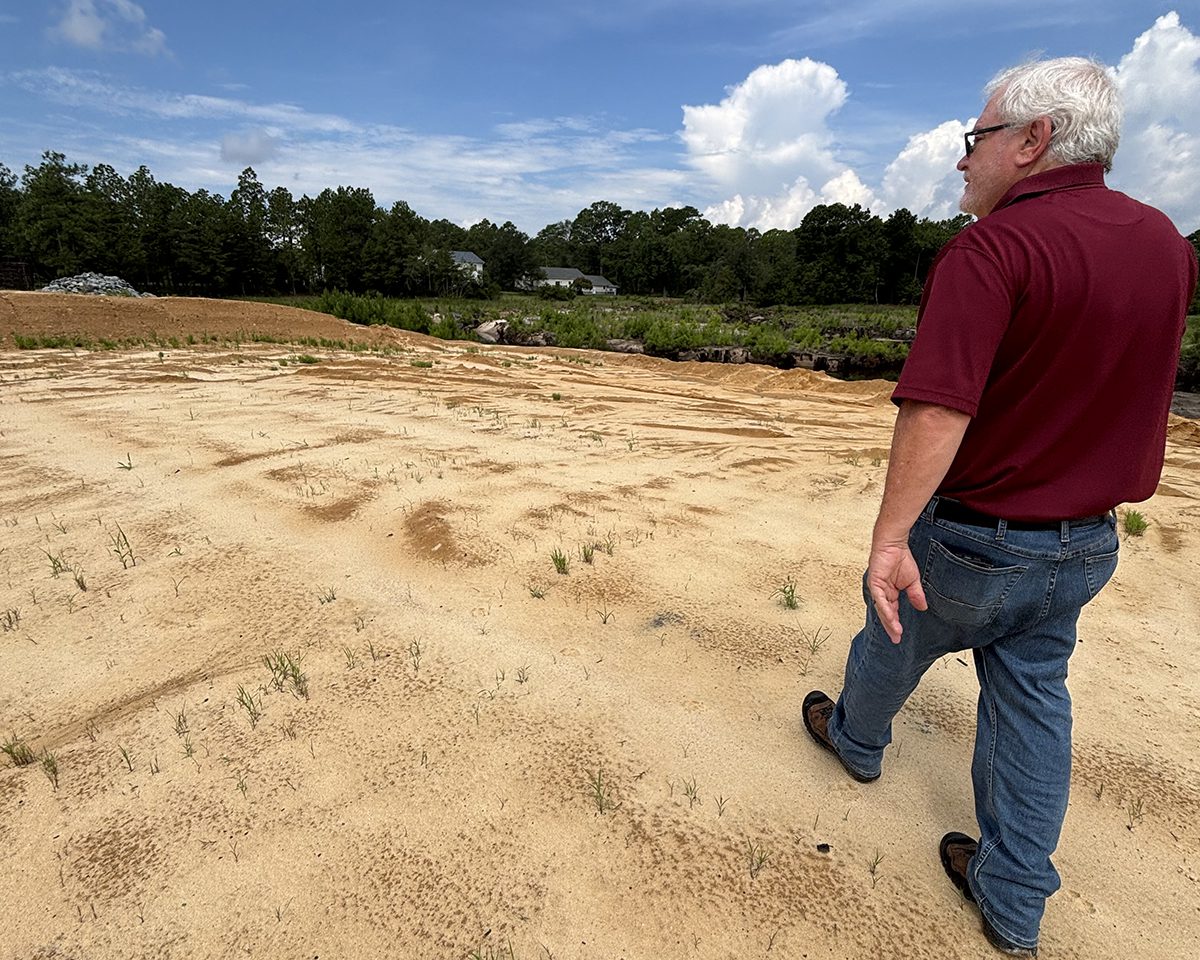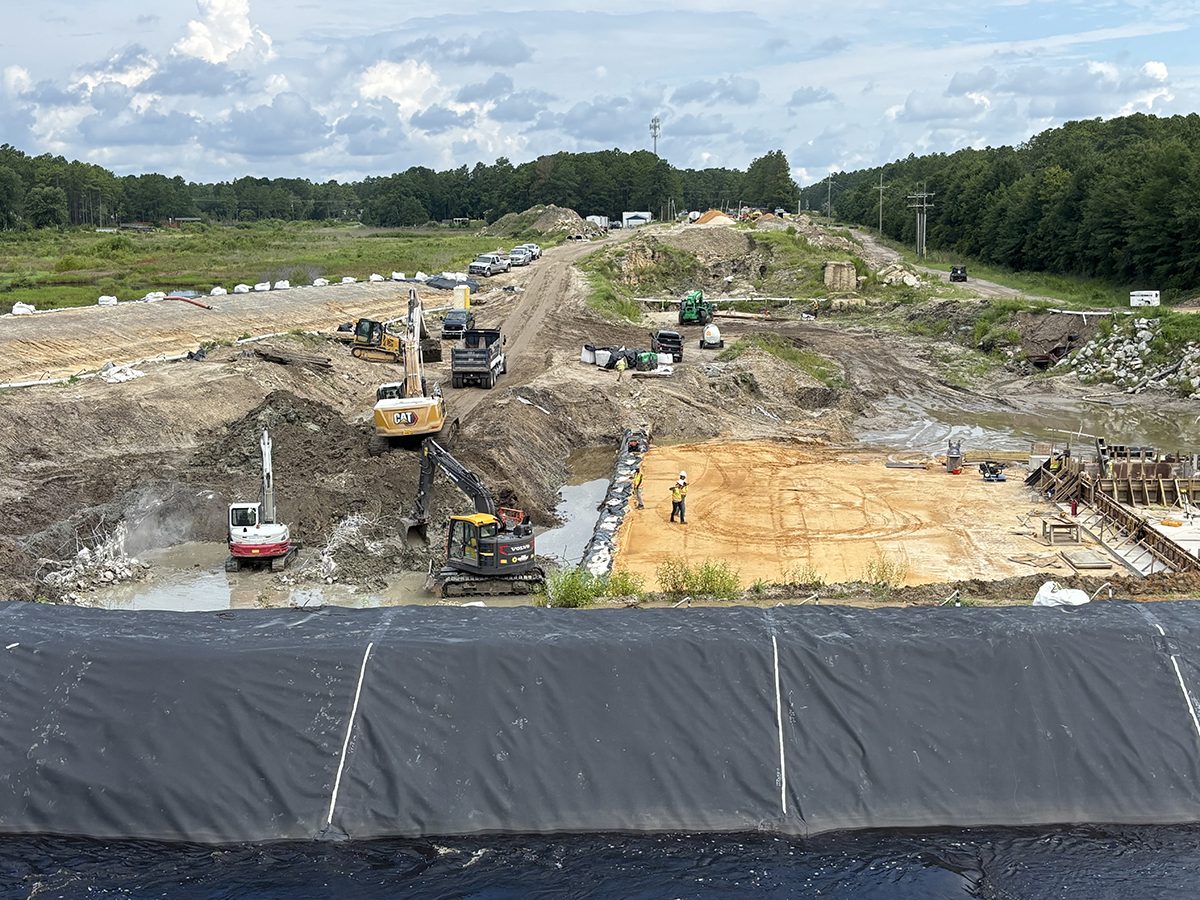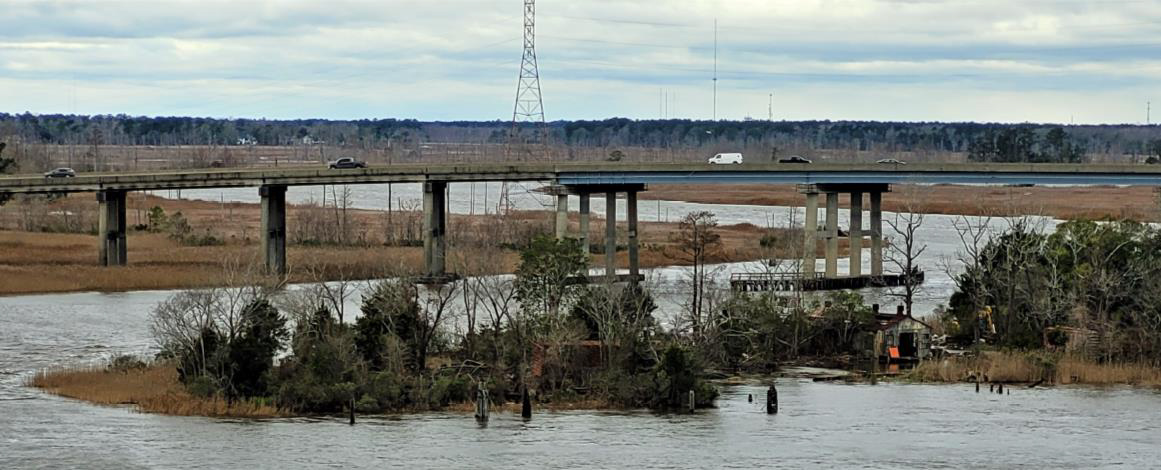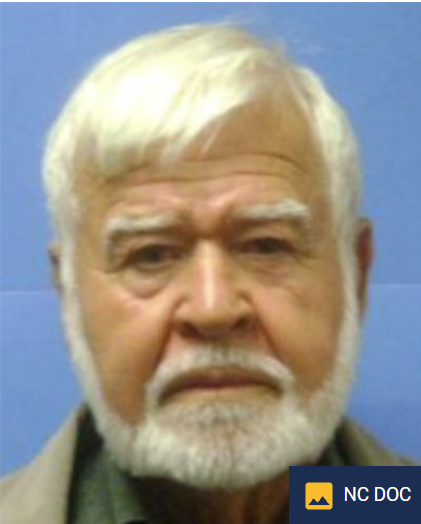
BOILING SPRING LAKES – For the most part, work had wrapped on Pine Lake Dam here back in mid-June.
The light at the end of a tunnel of headaches caused since the closure of one of this city’s main traffic arteries, portions of which run atop Pine Lake and North Lake dams, was shining brighter and brighter.
Supporter Spotlight
With the dams complete, reconstruction could begin on sections of East Boiling Spring Road that have since the summer of 2023 been closed while crews rebuild and restore the dam system crippled by rainfall during Hurricane Florence nearly seven years ago.
But a swift burst of rain that drenched this little Brunswick County city on June 14 revealed that something was not right about the nearly finished Pine Lake Dam. It did not seem to be functioning properly.
That was the message one of the city’s commissioners relayed in a phone call to town staff that day. Rainwater, the commissioner reported, wasn’t stacking up behind the dam.
“In other words, there wasn’t a lake there,” City Manager Gordon Hargrove said. “It was a significant rainfall and it should have held some water. It did not hold water. It was running right through the dam.”
An investigation found that Pine Lake Dam, the design for which was vetted in multiple reviews by both federal and state agencies, is at an elevation of about 5 feet too low.
Supporter Spotlight
More than a month has passed since the city informed its residents of the revelation, one that has drawn a firestorm of criticism and finger pointing in a matter that might very well end up getting hashed out in court.
No timeline in sight
Today, large bright-white and blaze-orange barricades block off a roughly 750-foot stretch of neatly packed dirt and coarse sand imitating a road over top of Pine Lake Dam.
Pine Lake Dam is part of a system of five earthen dams initially built here in the mid-1960s.
Throughout the years, the dams withstood the brute force from powerful coastal storms that have swept through the region.
But the unprecedented rain Hurricane Florence dumped in September 2018 over the area – up to more than 30 inches in some parts of coastal North Carolina – proved too much.
Rainwater filled the 275-acre Boiling Spring Lake to the brink, overtopping Sanford Dam. The breach, paired with substantial embankment erosion, led to the dam’s catastrophic failure.
The breach caused a domino-like effect of failures at all four of the smaller upstream dams in the city, and then the lakes that made up Boiling Spring Lakes were no more.
During the years since, the city secured about $56 million in funding from the Federal Emergency Management Agency, through Department of Defense grants, and Brunswick County to repair and restore the dams it owns and operates: North Lake, Pine Lake, Sanford, and Upper Lake dams. A fifth dam, Middle Lake Dam, is privately owned.
That funding has been spent, in part, on hiring firms to undertake the task of designing and building dams that meet today’s safety codes.
Work to restore Sanford Dam was progressing nicely, Hargrove said, when another coastal storm, one often referred to in these parts as the “unnamed storm,” caught Brunswick County and southern portions of New Hanover County by surprise last September.

Potential Tropical Cyclone No. Eight pummeled Boiling Spring Lakes with more than 20 inches of rain within a short period of time. Rain waters swept away Sanford Dam’s bypass channel, destroying the work that had been completed thus far and forcing construction crews to essentially start from scratch.
“Weather forecast was for 3 inches,” Hargrove said. “We got 22. It flooded out the detour route and so people were stranded in particular pockets in that side of town with no way of getting out.”
The city experienced a similar scenario last May with residents becoming trapped in patches of the community as a wildfire spread through the area and jumped N.C. Highway 87.
East Boiling Spring Road is a primary entry and exit point as a hurricane evacuation route through the city.
“So, yes, there’s a lot of angst involved with getting this road open,” Hargrove said. “I mean, we have looked at every possible alternative short of building a bridge, but by the time we finish a bridge, this project will be done.”
When that might happen remains an unanswered question.
“The setback with Pine Lake Dam, I can’t even give you a timeline of how long it’s going to keep that road closed. It took 12 months to get our permits last time” from the N.C. Department of Environmental Quality’s Dam Safety Program, Hargrove said.
Days after Hargrove met for an interview with Coastal Review in city hall, he returned to the commissioners’ chamber for the board’s Aug. 5 meeting, where he provided an update on the dams.
Work continues at Sanford Dam. Had it not been for the potential tropical cyclone last September, that dam would be finished, he said. Upper Lake Dam is complete.
The section of East Boiling Spring Road atop the newly reconstructed North Lake Dam will hopefully be finished in the next two to three weeks, Hargrove told commissioners.
There was still no word as to when construction to fix Pine Lake Dam might begin.
Hargrove explained that Sequoia Services, LLC, the Greensboro-based construction company hired by the city to rebuild the dams, agreed to build a temporary road atop the dam.
But the city would be responsible for any damages to the site should any occur if the temporary road, one that would cost an additional $175,000, were to be built. Pine Lake Dam is valued at $3.5 million.
Commissioners voted against the proposal, saying it was a liability too steep.
Who’s responsible?
Hargrove didn’t mince words when he sat down for an interview with Coastal Review on a late July morning.
“There’s going to be some things I’ll talk about and then there’s, for liability reasons and that sort of thing, I’m not going to comment on them because this is obviously an issue that could grow larger over time,” he said.
The defunct Pine Lake Dam is not the construction contractor’s fault, Hargrove said. The contractor built the dam to the design the company was given.
“I’m not willing to say where the problem exists and how that problem came about. It’s the city’s position that this is a third-party responsibility,” Hargrove said.
The city hired consulting firms Ashville-based McGill Associates and Greensboro-based Schnabel Engineering to design the project.
Those designs were vetted through a series of agencies, including the U.S. Army Corps of Engineers, FEMA and N.C. Dam Safety.
“As it goes up through the line, they’re really not getting into the hydraulics and analysis,” Hargrove said. “They’re just looking to make sure that the math works. So, the primary responsibility for the design of that dam is McGill and Schnabel.”
During the city commissioners meeting July 8, McGill Vice President Michael Hanson said that, unlike the other dams, there were no sufficient surveys or as-built records for Pine Lake Dam.
“We relied on information that was provided by the city, which was the best available information that was the original design plans,” Hanson said at the meeting, according to a WECT-TV report. “We relied on that information and moved forward. That was reviewed and approved by city staff. That was reviewed and approved by Dam Safety.”
This was Hanson’s first update to commissioners in a public setting since June 27 when the city announced in a social media post that Pine Lake Dam was defective.
The public’s response to that update was biting. There were one-word retorts including “Figures” and “Unbelievable” to accusations of “backdoor deals” and at least one call for city tax refunds to residents.
One commenter correctly pointed out, “THE HOOVER DAM WAS BUILT IN 5 YEARS, Y’ALL! In the 1930’s.”
The engineering marvel that spans the Nevada-Arizona border was, in fact, built from 1931-36, but not without disaster. The official number of people who died at the dam site during that time from causes ranging to drowning, blasting, rock slides, falls from the canyon walls, and heavy equipment and truck accidents, is 96, according to the U.S. Department of Interior’s Bureau of Reclamation.
City officials understand the mounting anger and frustration from Boiling Spring Lakes residents.
Hargrove wants them to know that commissioners have and continue to be “very proactive” and have tried to make sure the dam reconstruction cost doesn’t fall on the city’s taxpayers.
Earlier this year, commissioners approved an 8-cent tax hike, revenues of which will cover the costs of the city’s new stormwater department.
“This board does focus and look at the future and how we can improve it,” Hargrove said. “It just takes time. We’re catching up to 30 or 40 years of inactivity, but this board, my administration, are working hard to put that into play.”







